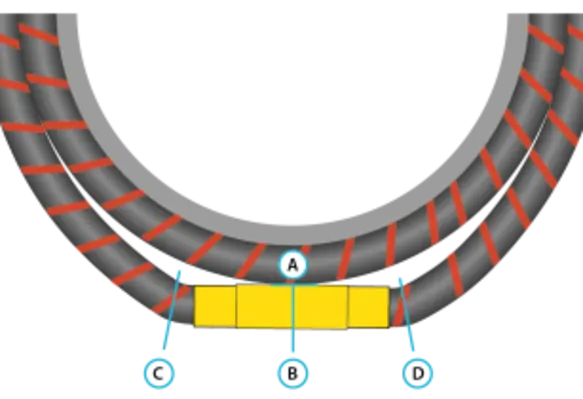KLAW, the leaders in Marine Breakaway Coupling technology, has released a Whitepaper providing detailed explanation on how to reduce hose fatigue on offshore reel transfer systems
The hose reel method is increasingly used in offshore transfer operations due to its efficient use of storage space and convenient deployment. With some oil rigs now beginning to come out of cold stack, it is now a good time to review and improve operational practices.
The KLAW Whitepaper entitled ‘Reducing Stress on Hose Reel Transfer Systems’ addresses the issues and variables involved when hoses and Marine Breakaway Couplings are wound onto reels.
For example, the nature of the Marine Breakaway Coupling is such that there is an unavoidable and distinct interruption in the otherwise natural radius of the hose coil. This can cause stress to both components. The relationship between ‘coil discrepancy’ and ‘contact angle’ is considered and solutions proposed to minimise stress and fatigue.
Stress factors are also taken into account and discussed. These include ‘weight impact stress,’ caused by the physical weight of the coupling and its profile impact on the inner hose. Additionally there are ‘displaced weight’ effects on each side of the coupling and also ‘hose kink stress’ caused by the extent of imperfect ‘contact angle.’
The opportunity is taken in the Whitepaper for KLAW to illustrate how its Marine2 Breakaway Coupling was developed to address many of the stress related issues highlighted. By incorporating KLAW’s Flip Flap Valve technology and recent product development innovations, the Marine2 Breakaway Coupling is now the lightest and shortest on the market. Its Easy Reset facility also reduces fatigue on the hose as the coupling is no longer required to be detached for servicing or resetting following activation.
The Marine Breakaway Coupling is a proven industry standard in minimising risk of spill which in turn, protects people, assets, the environment and reputations. In the event of vessel drift or pressure surge, the coupling closes flow and then separates, therefore allowing the operator to maintain control over media contained within the transfer process.










